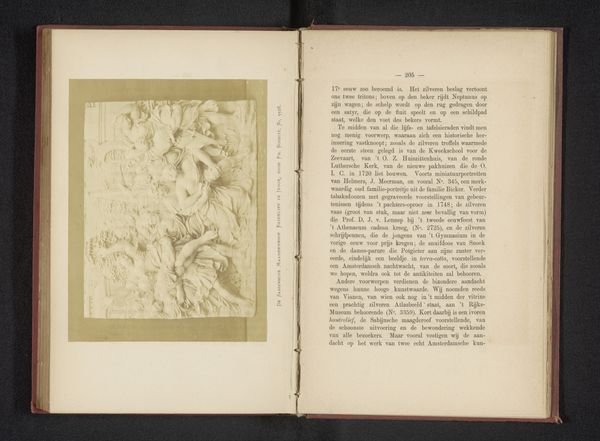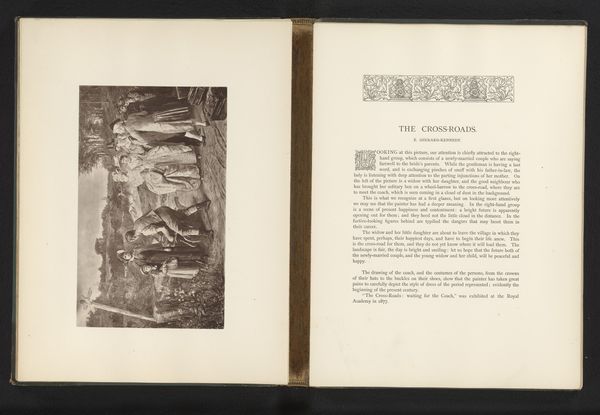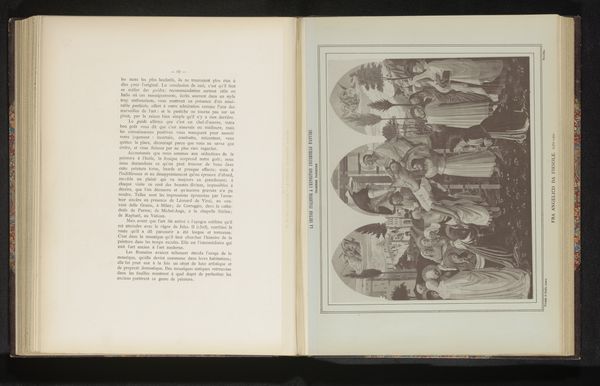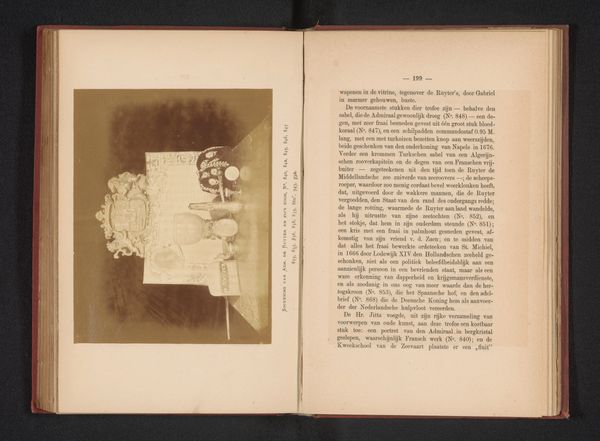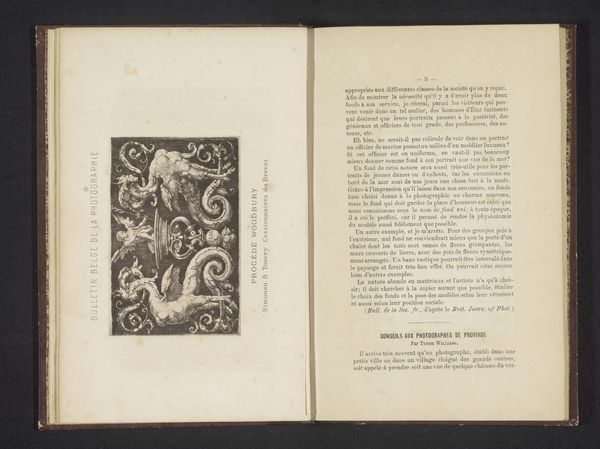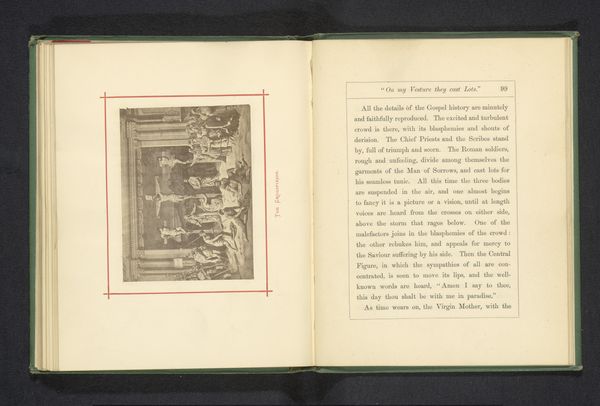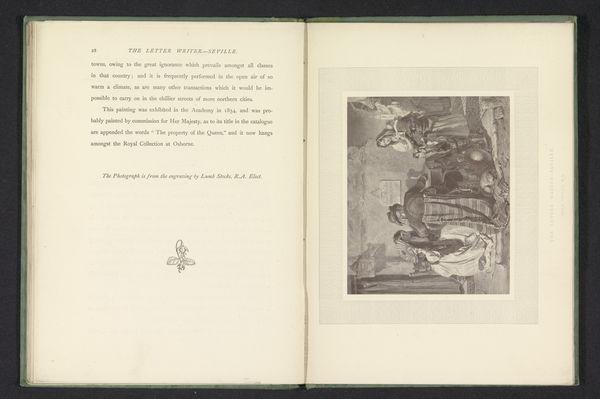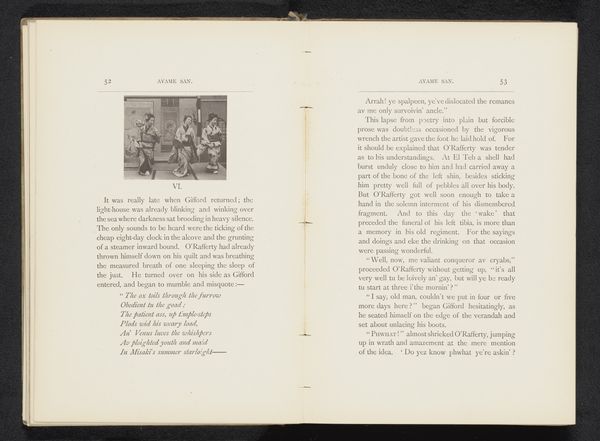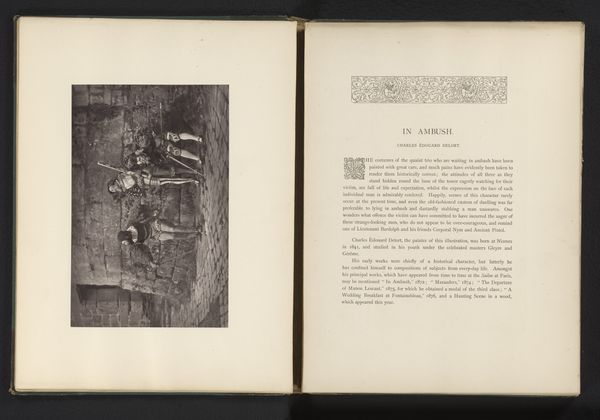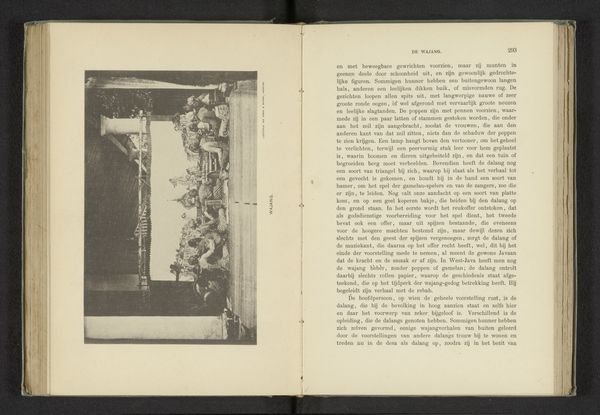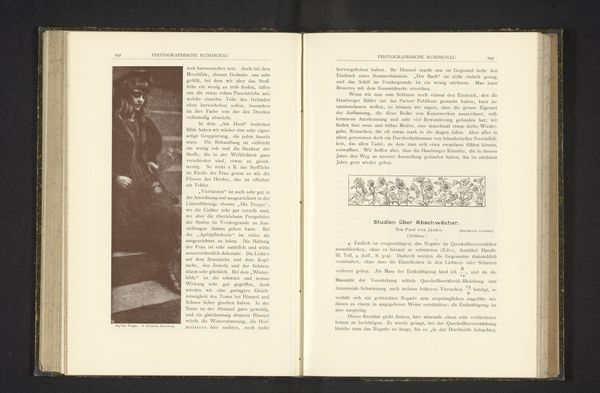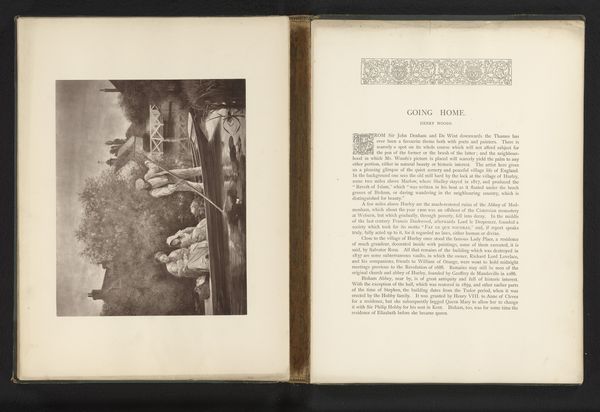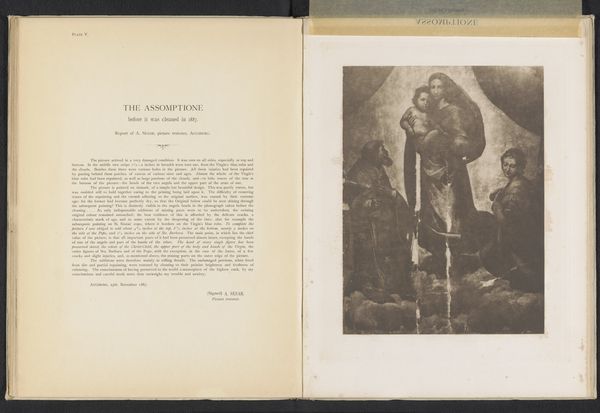
print, photography, gelatin-silver-print
# print
#
landscape
#
photography
#
gelatin-silver-print
Dimensions: height 144 mm, width 97 mm
Copyright: Rijks Museum: Open Domain
Curator: So, here we have Henry Taunt’s “The Grave of Lord Beaconsfield,” taken sometime after 1881. It’s a gelatin silver print. What strikes you first about this photograph? Editor: I find it fascinating that this photograph is part of an open book. It lends a narrative feel and invites close inspection. The contrast is intriguing—it seems to be drawing attention to how people memorialized someone. How do you interpret this work? Curator: As a materialist, my focus is drawn to the means of production and reception here. We’re looking at a photograph of a grave, reproduced as a print, bound in a book. This is labor, industrial process, circulation. Consider the social context: Who could afford such a commemorative volume? How did photography alter mourning practices? This image transcends mere documentation; it is commodity. What does the book format contribute, do you think? Editor: I see your point about its circulation! The book format grants the image a sense of permanence, more so than a loose print. Its inclusion alongside text also invites contextual understanding and deeper historical immersion for a wide audience. Curator: Exactly! This challenges traditional notions of art. Is it the grave, the photograph, or the book itself that holds significance? All were produced with material costs and intentions. How does contemplating these processes shift your appreciation? Editor: It really changes the way I view photography. Thinking about the physical journey this image took and the labour involved opens up a completely new perspective. Thank you for sharing! Curator: And thank you. Examining the material reality is key to appreciating art's profound impact on society.
Comments
No comments
Be the first to comment and join the conversation on the ultimate creative platform.
